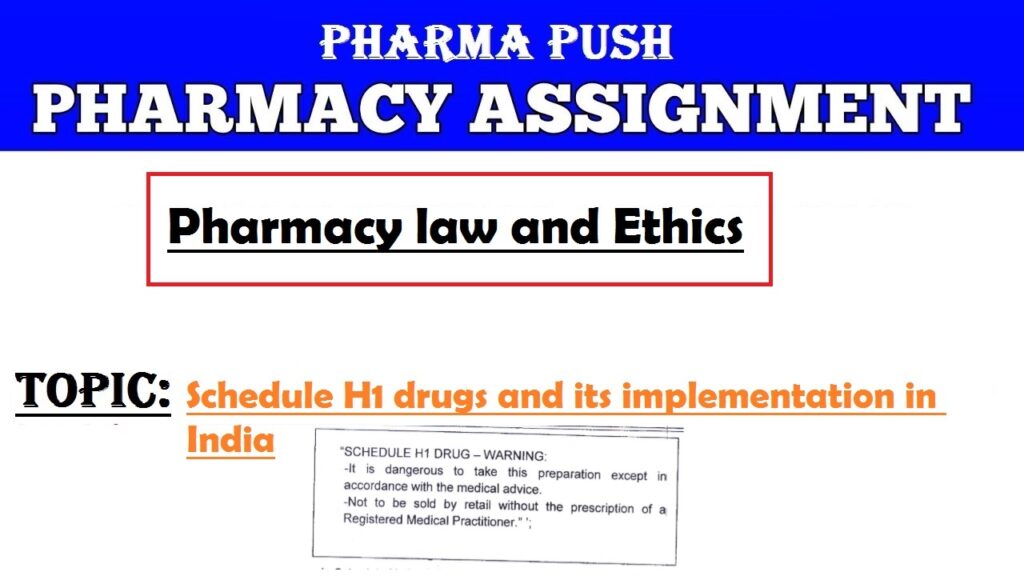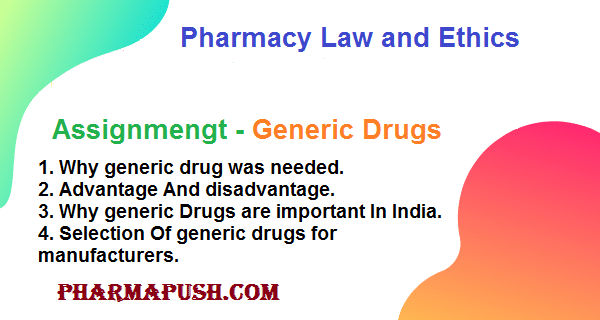Overview of Drug License
A drug license, also known as a pharmaceutical license or a medicine license, is a legal authorization granted by the government or regulatory authorities to individuals or entities involved in the manufacturing, distribution, sale, or importation of pharmaceutical products. These licenses ensure that drugs meet specific safety, quality, and efficacy standards and are crucial for maintaining public health and safety.
The access to medicines and drugs must be restricted and regulated to ensure that such goods are not abused or misused by individuals. Thus, all pharmacists, wholesalers, retailers, manufacturers, sellers, dealers and importers of drugs, cosmetics, ayurvedic, Siddha and Unani drugs have to mandatorily obtain drug license under the Drugs and Cosmetics Act, 1940.
The Drugs and Cosmetics Act, 1940 and the Drugs and Cosmetics Rules, 1945, help the government regulate and monitor the quality of drugs sold in India. The government exercises control over drugs from the raw material stage during manufacture, sale, distribution and till it is sold on to a patient or consumer by a pharmacist in a retail pharmacy, hospital or dispensary.
The government also exercises control in the aspects related to import and export of medicines, sale of the drug to a minor, consumption of schedule H & X drugs, etc., that requires thorough monitoring and cautious execution. The drug license is granted by the drug controlling authority under the Drugs and Cosmetics Act, 1940.
Types of Drug Licenses
In India, the following types of drug licenses are required, depending on the nature of the drug business:
- Manufacturing License: Issued to pharmaceutical companies or facilities engaged in the production of drugs. This license ensures that manufacturing processes comply with Good Manufacturing Practices (GMP).
- Wholesale License: Granted to wholesalers or distributors involved in the bulk distribution of pharmaceutical products.
- Retail License: Issued to pharmacies or drug stores allowing them to sell drugs directly to consumers. A retail license is required for the retail sale of drugs. A retail sale means the sale of drugs or cosmetics for the consumption of the end consumer. Retailers can sell it to a dispensary, hospital, educational, medical, or research institute. Retailers engaged in pharmaceuticals, cosmetics, stand-alone pharmacists, ayurvedic shops, etc need this license.
- Import License: Required for importing drugs from other countries to ensure compliance with local regulations.
- Export License: Needed for exporting pharmaceutical products to other countries, ensuring compliance with international regulations and standards.
Application for a Drug License
The drug controlling authority or the regulatory authority is responsible for issuing the drug license. The applicant must apply to the respective drug controlling authority based on the license he/she requires as each drug controlling authority is responsible to issue different licenses (as stated above). The following is the process for obtaining the drug license:
Visit the respective drug controlling authority website: The applicant must visit the respective drug controlling authority (SDSCO, CDSCO or Ayush) depending on the type of license he/she is applying for since each drug controlling authority is responsible for the issue of different types of drug licenses.
Filing of application: The applicant must file the drug license application online on the respective drug controlling authority website. The applicant must fill all the details asked in the application form.
You May Like: Overview of Pharma marketing practices
You May Like: Counterfeit or Spurious medicines
You May Like: Generic Drugs in Easy Language
Upload documents: After filling in the details on the application form, the next step is to upload the documents and submit the form along with the applicable fees. The applicant must keep all the documents updated before filing the application.
Visit by drug inspector: After receiving the application form, the drug Inspector will personally visit the company premises, shop or the drugstore for the verification of documents and correctness of facts stated in the application.
Grant of the drug license: After inspection and verification by the drug inspector, the drugs controller will issue the drug license.
List of Essential Documents For Obtaining a License
The specific documents required for obtaining a license may vary depending on the type of license and the regulations of the jurisdiction in which the license is being sought. However, here is a general list of essential documents often required for obtaining various types of licenses related to pharmaceuticals and drugs:
- Application Form: A completed application form provided by the regulatory authority.
- Proof of Legal Entity: Documents establishing the legal status of the entity applying for the license, such as a certificate of incorporation or registration.
- Site Master File (SMF): A detailed document providing information about the manufacturing facility, including its layout, construction, equipment, utilities, and procedures.
- Proof of Premises Ownership or Lease Agreement: Documents demonstrating ownership or legal occupancy of the premises where the pharmaceutical operations will be conducted.
- Quality Management System (QMS) Documentation: Documentation outlining the quality management system implemented by the applicant, including standard operating procedures (SOPs), quality control processes, and quality assurance protocols.
- Technical Staff Qualifications: Resumes, qualifications, and certifications of key technical personnel responsible for drug manufacturing, quality control, and regulatory compliance.
- Good Manufacturing Practices (GMP) Compliance Documents: Evidence of compliance with GMP regulations, such as GMP certificates, audit reports, and validation records.
- Equipment Calibration and Maintenance Records: Documentation demonstrating the calibration, maintenance, and validation of manufacturing equipment and instruments.
- Quality Control Records: Records of quality control tests, including raw material testing, in-process testing, and finished product testing.
- Packaging and Labeling Specifications: Specifications for packaging materials and labeling of pharmaceutical products, including artwork, product inserts, and package inserts.
- Batch Manufacturing Records: Detailed records of each batch of pharmaceutical products manufactured, including batch records, production logs, and batch release documentation.
- Stability Studies: Data from stability studies demonstrating the shelf-life and stability of pharmaceutical products under various storage conditions.
- Environmental Impact Assessment (if applicable): Assessment of the potential environmental impact of pharmaceutical manufacturing operations, as required by environmental regulations.
- Safety Data Sheets (SDS): Safety data sheets providing information on the hazards and safe handling of chemicals and pharmaceutical ingredients used in manufacturing.
- Regulatory Approvals and Certificates: Copies of any regulatory approvals, certifications, or licenses obtained from other regulatory authorities.
- Export and Import Documents (if applicable): Documents related to the import or export of pharmaceutical products, including import/export licenses, shipping documents, and customs declarations.
- Financial Documents: Financial statements, bank statements, or proof of financial stability to demonstrate the financial viability of the applicant.
It’s important to consult with the specific regulatory authority or licensing agency in your jurisdiction to obtain the most accurate and up-to-date information regarding the required documents for obtaining a pharmaceutical license. Additionally, requirements may vary depending on the type of license and the nature of the pharmaceutical operations.
Forms to Obtain a Drug License
The following are different forms an applicant is required to fill according to the type of License required:
- Allopathic Drugs – FORM 20
- Restricted Allopathic Drugs – FORM 20-A
- Wholesale of Allopathic Medicines – FORM 20-B
- Retail of Homoeopathic Medicines – FORM 20-C
- Allopathic drugs mentioned in the Schedule C & C (1) – FORM 21
- Wholesale of Allopathic Medicines specified in the Schedule C & C (1) – FORM 21-B
- Retail sale of the Restricted Allopathic Medicines specified in the Schedule C (I) – FORM 21-A
- Retail Sale of Drugs specified in the Schedule ‘X’ – FORM 20-F
- Wholesale of Drugs Specified in the Schedule ‘X’ – FORM 20-G
In conclusion, obtaining a drug license is a critical process for individuals, companies, and entities involved in the manufacturing, distribution, sale, import, or export of pharmaceutical products. The specific forms required for obtaining a drug license vary depending on the jurisdiction and the type of license being sought. However, common forms include the application form, site master file, quality management system documentation, technical personnel information, equipment validation forms, batch manufacturing records, packaging and labeling specifications, stability study protocols, environmental impact assessments (if applicable), safety data sheets, and regulatory approvals and certificates.


